Taking the Leica Summarit-S 35mm f/2.5 ASPH and the S2 for a spin around the neighborhood
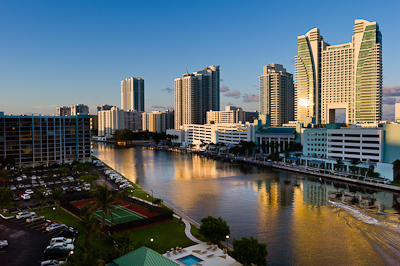
The long-awaited Leica Summarit-S 35mm f/2.5 ASPH lens is finally shipping, with the first units going to customers this week. Many have hoped this lens would be one of the best wide-angle offerings for medium format digital and I can attest that it doesn't disappoint. I had the opportunity to briefly test the 35mm for a weekend. Without the time to travel someplace "nice", I just took the S2 and 35mm for a walk around my neighborhood here in Hallandale Beach, Florida, then over to neighboring Hollywood Beach. 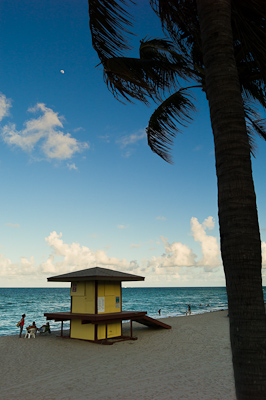
100% crop

Leica S2 with 35mm, 1/125th at f/3.4, ISO 160

The design for the new lens is based off of the stellar 19mm Elmarit-R, but the 35mm Summarit-S adds an aspheric element in the front group to reduce aberrations and improve performance. It's also worth noting that the Leica 35mm Summarit-S is the fastest wide angle lens ever made for medium format, sporting an f/2.5 maximum aperture. Physically longer than the standard 70mm Summarit-S by about an inch (29mm), the 35mm Summarit-S is slightly heavier, weighing in at 2 lbs (930g) vs. the 70mm at 1.6 lbs (740g). Compared to the Hasselblad HC 35mm f/3.5, the Leica lens is both smaller and lighter even though the Leica offers a full stop faster aperture. I found that it balances in the hand almost perfectly, with the focus ring falling between my thumb and forefinger. 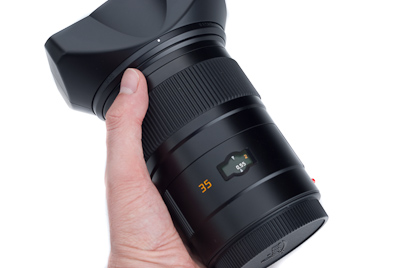
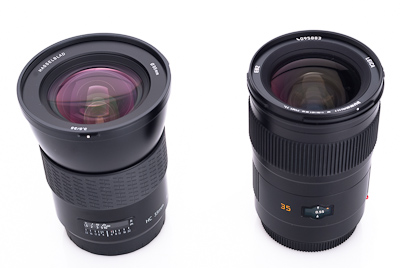
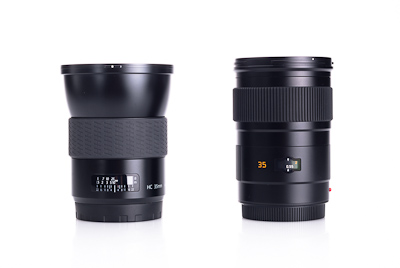
While getting any depth-of-field has been a challenge for me with the S2 and the 70mm, the 35mm definitely delivers broad depth of field and is perfectly suited to landscape photography (as I had hoped it would be). This may seem rather obvious as the new lens is a wide-angle, but the point is that with diffraction setting in at around f/13 on the S2's CCD (this is a function of the physics of pixel pitch), I really don't want to stop down too far to gain depth of field at the expense of fine detail sharpness. 
100% Crop
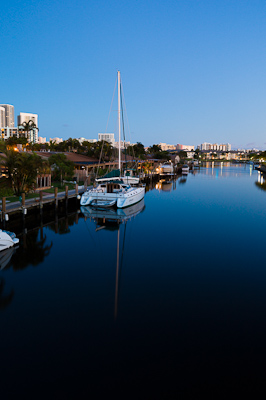
Hand-held shooting is very easy on the 35mm due to the wider angle of view (equivalent to a 28mm). I was able to get reasonably sharp pictures at 1/30th of a second with a little mindfulness and thanks to the S2's well damped mirror and shutter, but I'd recommend 1/60th or 1/90th as a realistic everyday minimum for sharp results. Going to 1/125th or 1/180th guaranteed critically-sharp images. 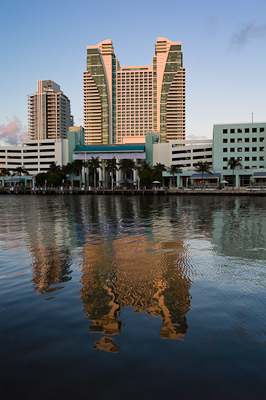
100% Crop
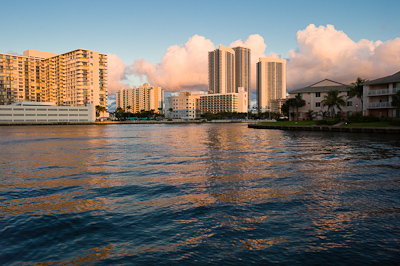
This lens is quite crisp wide-open at f/2.5. It even produces some decent bokeh as well. This is not a "typical" medium format wide-angle offering that must be stopped down to f/11 and beyond just to get some corner-to-corner sharpness. Looking at the MTF charts for the lens shows that in the center of the frame, it is already resolving 40 lp/mm at 75% contrast wide-open (and a really impressive 90% contrast for 20l p/mm). The corners are not perfect wide-open, dropping to about 30% contrast. In reality, this should only be visible at the very corners as it represents only the last 10% of image height on the MTF graph. By f/5.6 performance is really astonishing and only the very extreme corners have a small drop in contrast (50%). When I look at the images I shot with the lens, real life results echo the published specs and bring home just how exceptional the 35 really is. 
Leica S2 with 35mm, 1/2000th at f/2.5, ISO 160
100% Crop
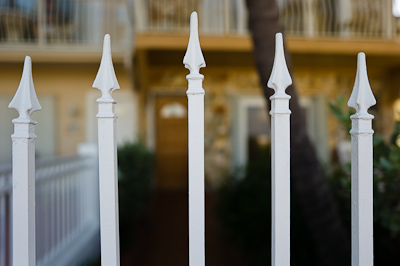
Leica S2 with 35mm, 1/1000th at f/2.5, ISO 320
100% Crop - Notice the small hair in the paint
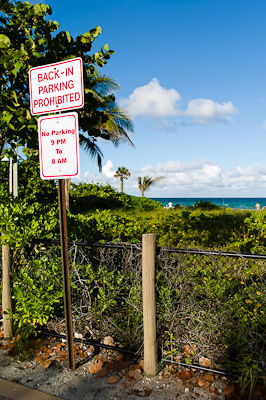
I ended up manually setting focus for my landscape shots on a tripod and would probably recommend similar technique. Why? Due to the larger DOF when stopping down, it is better to set the focus slightly forward of infinity to yield the sharpest details over the frame. I would really welcome either a DOF readout on the rear LCD or top OLED, or even better, a custom function that would preset the lens to hyperfocal distance given a set aperture. That would be really sweet. My method essentially turned the S2 into a point and shoot. I set my focus to between 5m and ∞ and without any refocusing I was able to shoot at f/11 and get most everything sharp front to back and corner to corner.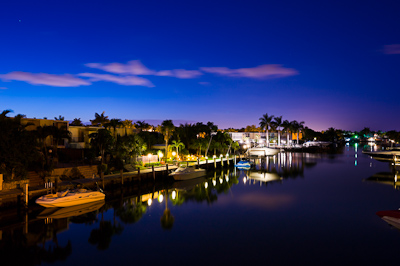

Distortion is almost non-existent. I was able to put horizon lines at the edges of my frames and have flat horizontals . Tall buildings remained straight rather than curved. Considering the angle of view, this is impressive. Of course, the lack of distortion comes courtesy of cutting-edge optical design, not post-processing lens corrections. At infinity the 35mm has just -1.2% distortion and -1.8% at close-focus of 0.55m. In practical use, with a properly leveled camera, the visible distortion is marginal and the lens should be well-suited to architecture and interior photography.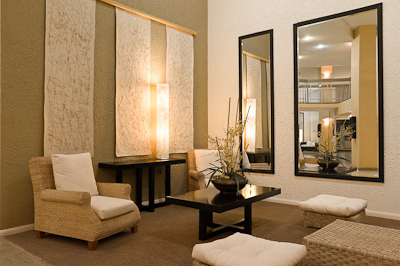
8sec at f/11, ISO 160, tripod
100% Crop from lower left 100% Crop from lower right corner
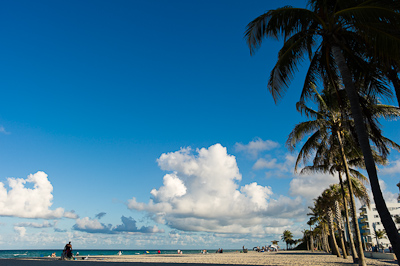
Leica S2 with 35mm, 1/250th at f/8, ISO 160
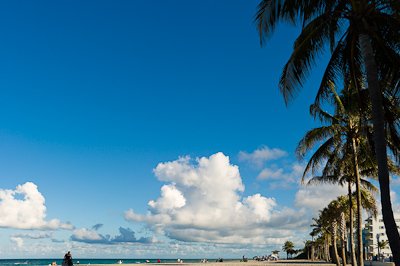
If I had any nit to pick regarding image quality it is that on very high contrast subjects (sunlit white building against deep blue sky, for instance), there is a trace of what appears to be magenta-red fringing. My first impression was that what I was seeing was lateral chromatic aberration, but there was no corresponding cyan-green edge on the opposite side. The effect appears most readily against blue skies (lots of UV, which can exacerbate fringing) and is most likely a result of either a small amount of sensor blooming or imprecision in LR’s demosaicing algorithm. Either way, the fringe is quickly fixed with a -15 red/cyan correction in Lightroom’s Lens Correction palette, along with Leica’s recommended setting of Defringe to “All Edges.” I’d expect the forthcoming profiles from Adobe and Leica to include this correction automatically as a lens profile. 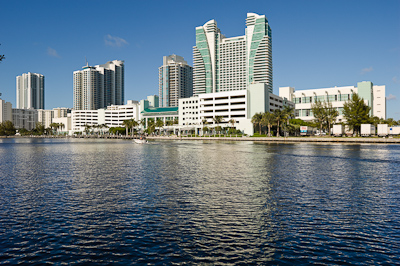
100% Crop
These three 100% Crops were taken from the above file. This first one has Defringe turned off in LR3.
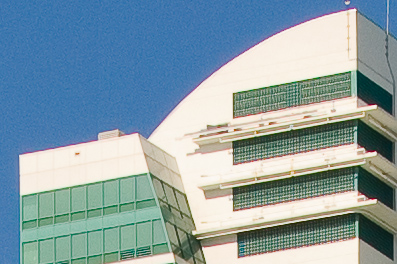
This next one shows the effect with Defringe set to "All Edges." There is a decent improvement, but the effect is still present.
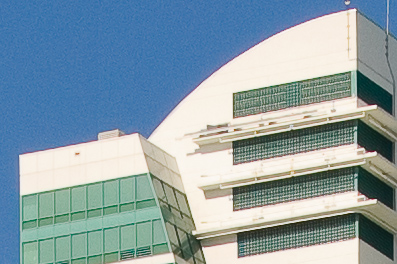
The last image here shows the effect with Defringe set to "All Edges" and the Red/Cyan control in Chromatic Aberration set to -17. The red edge is completely gone.
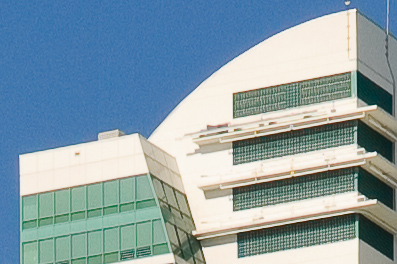
I believe that this latest offering for the S2 shows the real potential of the S system. After the 120 Macro is released, Leica has already indicated that the next lens to come from Solms will be a 24mm f/3.5 (19mm equiv). If the same level of quality of design is achieved, that new lens could be just as physics-bending as this one and really set a one-two punch precedent for non-view camera wide angle lenses for medium format digital. Wide angle lenses have been a traditional weakness for other medium format manufacturers and Leica is smart to focus on bringing innovation in this area early on. If the Leica 35 was an f/3.5 or f/4 lens that turned in better performance than the competition it would be one thing, but this lens is fully weather sealed, a full stop faster than its peers, and offers sharper results with no digital lens corrections and without the need to be stopped down past the point of diffraction to get a sharp image. I have a feeling that with each subsequent S lens introduction, we will be seeing a similar trend, with Leica setting the bar higher and higher. 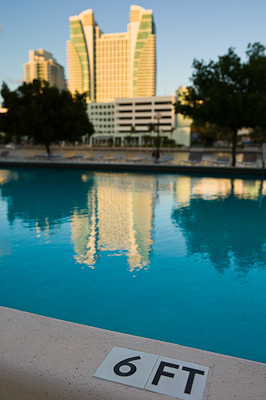
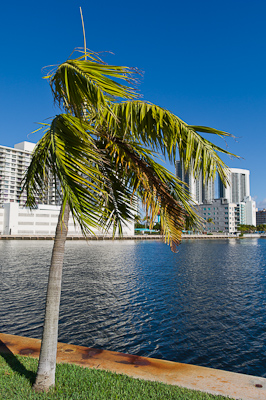
100% Crop
Bottom line: the Summarit-S 35mm f/2.5 ASPH delivers the goods. Now if Leica can just make enough to fill the demand…
Tech note: I processed all of the images posted here using the latest release of Adobe Lightroom 3 and exported to sRGB JPGs for web display. As I'm making the transition to LR 3 from LR 2.7, I'm finding that the new rendering (2010 version) is superior in most cases, but that for some images the old rendering (2003 version) is actually more detailed and less prone to moiré. I'll continue to experiment with more images and optimize LR 3 processing.
Labels: 35mm Summarit-S, leica, Leica S2, S2, Testing


1 Comments:
David,
Nice useful information, particularly on the use of LR3 for optimization with the Red/Cyan control in Chromatic Aberration set to -17. I have not experienced this problem yet myself, but when I do, it is nice to know how to handle it.
I was using your lens yesterday on the water while sitting on a Waverunner as my floating platform. Not something I would have ever done with any other medium format or Leica camera before. Of course, I did not plan on changing lenses on such a vehicle in choppy water. It was a joy to use and the rendering of water reflections is most interesting. The camera does not need to be treated like a baby at all.
Next water stop, shooting sailboat races, while in the sailboat.
Post a Comment
<< Home